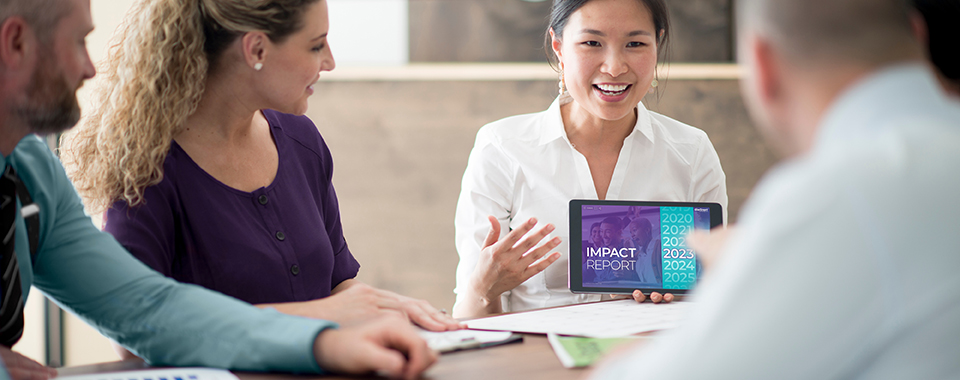Jan 17, 2017
How to Create and Use Donor Personas

In marketing, you are always being reminded to create a buyer persona to figure out who your ultimate customer is. In the nonprofit world, you may not have a buyer per se, but you do have a donor. And it is just as important to create a Donor Persona.
A buyer persona, and in turn a donor persona, is a detailed picture of who uses your services (or tends to donate to your cause.) In the not for profit world, it is important to create donor personas so that you know how to create appeals, and so you can target various appeals to the segments of your donor base most likely to respond to it.
A donor persona is generally set up to be a fake person, whose description fits a group of your donors. You name this fake person and create a bio for them.
Now, a real donor persona is actually going to be a lot more detailed than this – but more on that in just a second. I just wanted to give you a good idea of how many people set up their donor personas.
That being said, let’s look step by step at how to create and use your donor personas.
Step 1: Ask the Right Questions
The first thing you want to do in the donor persona creation game is figure out the questions you need to ask in order to find the answers you need to really know your donors.
There are many ways to do this, but I am going to break it down into five categories. You may want to add more categories, but these are the basic groups.
Background
You need a little bit of background information on your donors. To get this, think about questions like:
- Where did they go/are they going to school?
- What is their occupation?
- Do they volunteer? If so, where?
- What do they do for fun? What are their hobbies?
Demographics
Let’s break down exactly who this person is.
- What is there gender?
- How old are they?
- What is their household income?
Identifiers
Now, we want to know some specifics about who they are.
- How do they find information or do research?
- What social media platforms do they use, if any?
- What is their preferred communication method?
- How do they use the internet?
- What are their passions?
Donor Habits
What you are obviously concerned about the most with your donor personas is how and why they donate to organizations.
- How much do they tend to donate yearly?
- How do they decide where to donate?
- Do they typically volunteer with an organization before donating?
- Do they like to charity-hop? (Donate once to a charity, then another, etc., without sticking to one group consistently.) Or do they tend to keep donating to one or a few organizations they love?
Goals/Challenges
The last category I am going to talk about today is goals/challenges.
- What are their goals? Both in general and when donating/volunteering.
- What are their biggest challenges?
- How do they try to overcome their challenges and accomplish their goals?
Creating Your Donor Persona Questionnaire
I have given you some questions to start with, but it is still important for you to sit down and figure out the answers you need to know. Draft up a questionnaire, and then let’s move on to Step 2.
Step 2: Conduct Research
Now that you know what you want to know, it is time to know it. This is the research stage, where you get all the answers to all of your questions.
There are a lot of ways to conduct research on your donors, and you probably want to do a few of them. Let’s walk through some of your choices.
Go Through Databases
You probably already have a lot of information right at your fingertips. Go through your records and see what you can find. There is a good chance that you will be able to answer some of your burning questions right from the information you already have.
Online Research
Online research can be helpful in creating an overall picture of who donors tend to be. Last week, I combed through that information and came up with an infographic on the common donor.
This information is very helpful in coming up with general tendencies. However, it isn’t enough on its own. The general donor may not at all reflect your general donor. For example, you’ll see that Utah is the state in the US that tends to give the most. But if you are a NYC based organization, you shouldn’t be targeting Utah residents.
So use online research as your base, but then develop it further with your own research.
Colleague Research
It is also a good idea to sit down with your team, the board, your volunteers, your friends at ‘competing’ non-profits, etc. See what they think. Ask them how they would describe your typical donor.
Interviews, Surveys, Focus Groups
The most effective step in creating donor personas is talking to your actual donors. Set up some surveys, interviews, and/or focus groups with any willing donors. (Hint: it is helpful to offer some incentive to participants for longer surveys and interviews.)
- Invite a group of your frequent donors to sit down with you and answer a few questions.
- If the questions seem a little bit personal, make sure they know that you will not be sharing any of the information with others.
- Let them know why you are doing this and how it will help.
Paid Help
If you have the money in the budget, you can always hire someone to help with this.
Step 3: Create the Donor Personas
You know what you want to know and now you know it. So let’s get organized.
Once you have done all your research, sit down and put it together.
Develop a Matrix
Organize your research by first putting it into a matrix or spreadsheet. WealthEngine created a matrix you can use as an example.
Have the questions you asked listed along one side of matrix, with the survey respondents along the other. (To better protect this information, you can use fake names.) Now, fill in the blanks.
Here is a blank, fake one I created:
Look for Common Threads
Once you have completed your matrix, look for some common threads that allow you to group people together. For example, look for people in the same age range, who are the same gender, around the same income level.
You don’t need to create 1000 personas representing everyone who has ever donated a penny to you. However, you do want to figure out a few buckets of people who are giving to you regularly.
Create a Few Personas
Once you have your buckets, create a fake persona for each bucket. I took the fake matrix I created, and noticed a similarity between my first two fake people. Taking that information, I created my Debbie Donor persona showcased at the very top of this post.
You should have three or four of these donor personas when you are done. HubSpot created a template you can use for this.
Create One or Two ‘Ideal Donor Personas’
Now that you have your real personas, make one or two wishful-thinking donor personas. Maybe your research showed you that, while you have a lot of small donors, you have few to no big donors. A lot of small donors is good. However, you still want a couple of big donations to help you out.
Create a persona for a big donor – this is where online research and guessing comes into play. What do you think someone who tends to give big donations likes and dislikes? Where do they hang out? How do they decide where to donate?
Creating a persona for this desired donor will help you in the next step.
Step 4: Use Your Donor Personas Wisely
You have created your donor personas. Yay! Now, use them.
Share Your Personas with the Team
The first thing you should do is make your team aware of your donor personas (hopefully, they have been helping you all along, but either way, make sure they see the final product.)
These personas will help them as well.
Create Plans to Target Appeals and Marketing to Individual Personas
When you are sending out marketing materials or making an appeal, target them to specific donors. For example, if one of your donor personas tends to make donations through crowdfunding sources, then consider setting up a crowdfunding site and then send out an appeal to that group with a link to the crowdfunding site.
Similarly, if your large donors use LinkedIn but rarely Facebook, then set up your social media to send out big pushes through the right platform.
Always Be Refining
The ABC’s of sales is to always be closing. Well, the ABR’s of donor personas is to always be refining. Your donor base changes, and with it your personas change. Make sure to frequently update any donor personas you have created.
Wrap-Up on Donor Personas
Hopefully you have learned something from the above. Donor personas are an important part of your fundraising efforts. They help you design events based off of what your likely guest will like; helps you get the word out there in the right method; and makes your job a lot easier.
If you like what you see, then make sure to sign up for our newsletter.
Related




